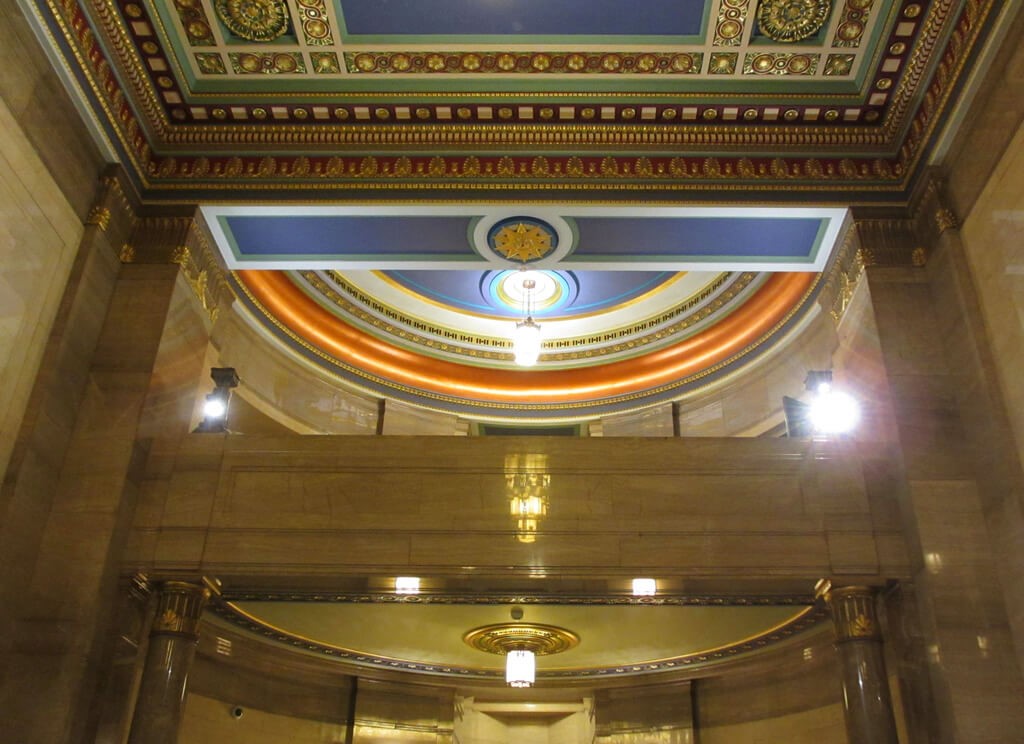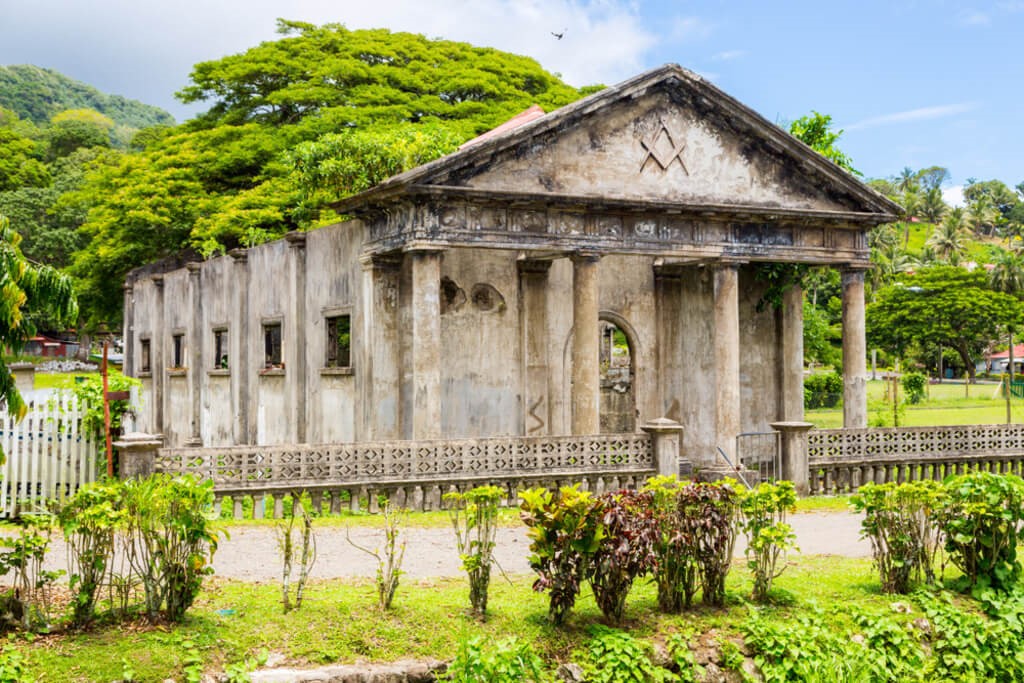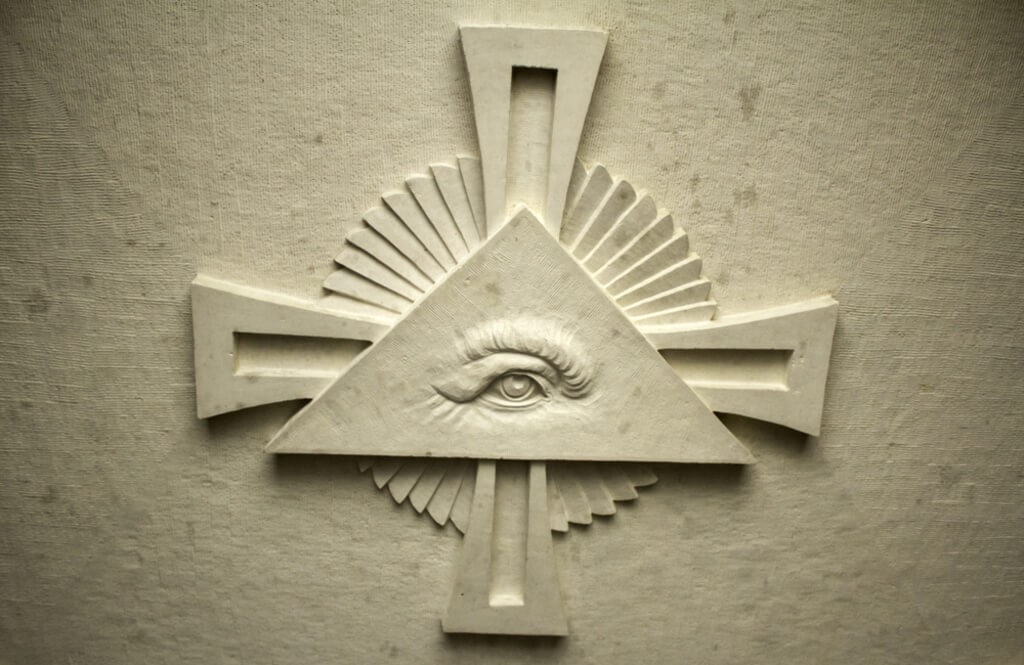A Complete History of Freemasonry: From Ancient Guilds to Modern Lodges
Freemasonry, a name that evokes images of secret handshakes, ancient symbols, and influential men meeting behind closed doors, has captivated the public imagination for centuries. It is the world’s oldest and largest fraternity, a global brotherhood dedicated to the principles of moral and spiritual enlightenment. Yet, for all its prominence, its origins remain a subject of intense debate, scholarly research, and romantic speculation.
To truly understand the Craft, one must journey back in time, tracing its evolution from a practical trade guild into a philosophical society. This transformation from building cathedrals of stone to building temples of character is the central narrative of Masonic development. The journey is a fascinating exploration of European history, the Enlightenment, and the timeless human quest for knowledge and self-improvement.
This article will guide you through the complete and authentic timeline of the fraternity. We will sift through myth and legend to uncover the documented facts, exploring the transition from operative stonemasons to the speculative lodges we know today. By examining its key moments and pivotal figures, we can illuminate the rich history of Freemasonry and appreciate its enduring legacy in the modern world.

What Are the Legendary Origins of Freemasonry?
Before we delve into documented history, it is essential to address the grand legends associated with the Craft. For centuries, Masonic lore has connected the fraternity to a variety of ancient and noble sources. These stories, while not historically verifiable, are crucial to the symbolic and allegorical framework of Masonic teachings.
The most prominent legend traces Freemasonry’s roots to the building of King Solomon’s Temple in Jerusalem, as described in the Old Testament. The master architect, Hiram Abiff, is a central figure in Masonic ritual, representing loyalty, skill, and fidelity unto death. This connection provides a powerful symbolic foundation for the Craft’s focus on architecture and morality.
Other theories link Freemasonry to the Knights Templar, the medieval military order of warrior monks. Proponents of this theory suggest that after the Templars were suppressed in 1307, they went underground, preserving their esoteric knowledge within the secretive structure of stonemason guilds. Still other legends point to the ancient mystery schools of Egypt, Greece, and Rome, suggesting that Freemasonry is the modern inheritor of their secret philosophical traditions.
While these narratives are compelling, modern historians view them as allegorical rather than factual. They were likely adopted or created in the 17th and 18th centuries to lend the emerging speculative fraternity an air of ancient prestige and profound purpose. The true, verifiable origins are both more humble and, in their own way, just as fascinating.

Did Freemasonry Evolve from Medieval Stonemason Guilds?
Yes, the most credible evidence points directly to the operative stonemason guilds of the Middle Ages. During the great cathedral-building era of Europe, from roughly the 12th to the 16th centuries, stonemasons were highly skilled and sought-after craftsmen. They traveled across the continent from one major building project to the next.
To organize their labor and protect their trade secrets, these masons formed guilds. They established temporary workshops or shelters at each construction site, which they called ‘lodges’. Within these lodges, they not only planned their work and stored their tools but also regulated their craft. They developed systems to distinguish between apprentices, journeymen, and master masons.
Because many craftsmen were illiterate, they used secret signs, tokens, and words to prove their level of skill and identify themselves to other masons in new towns. This system ensured that a traveling mason could prove his qualifications and be paid a wage appropriate to his rank. It was a practical system of quality control and mutual support, forming the bedrock of early Masonic organization.
This operative tradition is documented in what are known as the Old Charges or Gothic Constitutions. These are handwritten manuscripts, the oldest of which is the Regius Poem dating to around 1390. These documents outline the rules, duties, and legendary history of the masons’ craft, blending practical regulations with moral and religious admonitions. They represent the first written evidence of a uniquely Masonic culture.

How Did Operative Masonry Become Speculative?
The transition from ‘operative’ masonry, focused on physical building, to ‘speculative’ masonry, focused on moral philosophy, was a gradual process that occurred mainly in Scotland and England during the 16th and 17th centuries. As the era of cathedral building waned, the operative lodges began to decline in number and influence.
To bolster their membership and finances, some of these lodges began admitting men who were not actual stonemasons. These new members, often local gentlemen, intellectuals, and antiquarians, were known as ‘accepted’ or ‘speculative’ masons. They were not interested in cutting stone but were drawn to the lodges’ secretive nature, moral teachings, and ancient traditions.
Over time, these accepted masons began to outnumber the operative masons in many lodges. They began to reinterpret the working tools and symbols of stonemasonry in a purely allegorical sense. The square, for example, was no longer just a tool for ensuring a right angle but became a symbol for squaring one’s actions with the principles of virtue. The compasses came to represent the importance of circumscribing one’s passions and desires.
This shift marked the birth of modern Freemasonry. It was no longer about building physical structures but about building a better self, using the language and symbols of architecture as a guide for moral and ethical living. The question of where does Freemasonry come from finds its most concrete answer in this pivotal evolution from a workers’ guild to a philosophical fraternity.

When Was the First Grand Lodge Formed?
The official birth of organized, modern Freemasonry can be dated to a specific event. On June 24, 1717, St. John the Baptist’s Day, four existing lodges in London met at the Goose and Gridiron Alehouse in St. Paul’s Churchyard. There, they established the Grand Lodge of London and Westminster.
This was a revolutionary step. For the first time, individual Masonic lodges voluntarily joined together under the authority of a single regulatory body. This Grand Lodge had the power to create new lodges, standardize rituals, and govern the Craft as a whole. Anthony Sayer was elected as the first Grand Master, and the era of modern, institutional Freemasonry had begun.
This event is the primary reason we know how Freemasonry got started in its current, organized form. The formation of the Grand Lodge provided a central authority that could promote and spread Freemasonry in a consistent manner. In 1723, under the direction of Grand Master John Theophilus Desaguliers and with the help of Reverend James Anderson, the Grand Lodge published its Book of Constitutions, further codifying the rules, history, and principles of the Craft.

Who Were the Antients and the Moderns?
The initial decades of the Grand Lodge were not without conflict. In 1751, a rival Grand Lodge was formed in London by a group of predominantly Irish Masons who felt that the original 1717 Grand Lodge had deviated from ancient practices. They called themselves the ‘Antient’ Grand Lodge, labeling the original body the ‘Moderns’.
The Antients claimed the Moderns had simplified rituals and abandoned certain traditional elements, such as the inclusion of the Royal Arch degree as an integral part of the third degree. The Antients, led by the energetic Laurence Dermott, were highly successful and chartered lodges across the globe, creating a significant rivalry that lasted for over 60 years.
This schism was a defining feature of 18th-century English Freemasonry. Both Grand Lodges competed for supremacy, each claiming to be the one true authority. The rivalry finally came to an end in 1813. After years of negotiation, the two bodies merged to form the United Grand Lodge of England (UGLE), which remains the governing body of Freemasonry in England and Wales today. The formation of The Masonic Grand Lodge of England in its united form healed the great schism and standardized the practices that are now common worldwide.

How Did Freemasonry Spread Across the World?
Following the establishment of the Grand Lodges in Great Britain, Freemasonry experienced explosive growth in the 18th century. It spread rapidly throughout Europe and, thanks to the reach of the British Empire, to the Americas, India, and other colonies around the world.
Military lodges played a crucial role in this expansion. Regiments in the British army often carried a Masonic warrant with them, allowing them to initiate new members wherever they were stationed. This carried the seeds of the fraternity to distant shores and established a Masonic presence in new territories. Merchants, colonial administrators, and other travelers also helped to establish lodges in new cities.
Freemasonry found particularly fertile ground in the American colonies, where its principles of liberty, equality, and rationalism resonated with the spirit of the Enlightenment and the burgeoning revolutionary movement. Many of the founding fathers were Masons, including George Washington, Benjamin Franklin, Paul Revere, and John Hancock. Their involvement lent the fraternity immense prestige and influence in the new United States. For those interested, World History Edu offers a good overview of this global expansion and its impact. For an even broader academic perspective, there is further reading on the history of Freemasonry available from multiple sources.

What Are the Core Masonic Degrees?
At the heart of Freemasonry is a system of progressive moral instruction conveyed through allegorical plays or rituals known as degrees. The foundational system, common to all regular Masonic lodges worldwide, is the ‘Blue Lodge’ or ‘Craft Lodge’, which consists of three degrees.
The first degree is that of Entered Apprentice. It is a candidate’s initiation into the fraternity. Its lessons focus on the need for self-reflection, the importance of truth, and the universal dependence on a Supreme Being. The Apprentice is presented with the basic working tools of a stonemason and begins his journey of moral construction.
The second degree is that of Fellowcraft. This degree represents the stage of intellectual development and learning. The candidate is encouraged to pursue knowledge, particularly in the liberal arts and sciences, as a means of improving his understanding of the universe and his place within it. It is a call to diligent labor and the pursuit of reason.
The third degree, that of Master Mason, is the culmination of Craft Masonry. It confronts the candidate with the themes of mortality, fidelity, and the hope of resurrection to a future life. Through the allegory of the death of Hiram Abiff, the Master Mason learns the great lesson of faithfulness to one’s principles, even in the face of adversity.

What About Higher Degrees and Appendant Bodies?
After a Mason has completed the three degrees of the Craft Lodge, he may choose to seek further Masonic light by joining an appendant body. These are separate but related organizations that expand upon the themes and lessons of the Blue Lodge. They are not ‘higher’ in the sense of authority, as the Master Mason degree is universally considered the highest rank in Freemasonry, but they offer ‘more’ degrees and knowledge.
The two most prominent appendant systems in the world are the Scottish Rite and the York Rite. Each offers a unique path of further Masonic education.

What is the Scottish Rite?
The Ancient and Accepted Scottish Rite is a system of 30 additional degrees, numbered from 4 to 33. These degrees are not worked in the same way as the Craft degrees but are typically communicated in a theatrical setting. They explore a vast range of philosophical, religious, and historical themes, drawing from a variety of world traditions.
The degrees of the Scottish Rite are grouped into several series, or ‘houses’, each with its own focus. They elaborate on the lessons of the Blue Lodge, culminating in the 32nd degree, Master of the Royal Secret. The journey through these degrees is a profound philosophical exploration. The ultimate honor is the path to the 33rd degree Freemason, which is an honorary degree awarded for outstanding service to the Craft or to humanity.

What is the York Rite?
The York Rite is not a single, unified structure but rather a collection of three distinct Masonic bodies. A Master Mason can choose to progress through them in order. The first is the Royal Arch, whose degrees are considered by many to be the completion of the Master Mason degree. The next is Cryptic Masonry, which explores events related to King Solomon’s Temple in more detail.
Finally, a member can join the Knights Templar, a Christian-oriented order that bases its ritual on the traditions of the medieval crusading knights. The York Rite offers a different but equally profound path of Masonic discovery, deeply rooted in Judeo-Christian symbolism and history. The study of these various rites and their historical development can be enhanced by consulting classic Masonic texts like those in the Oliver G. Masonic Library.

How Has Freemasonry Adapted to the Modern World?
Throughout its long history, Freemasonry has faced numerous challenges. It has been the subject of conspiracy theories, condemned by religious institutions, and suppressed by totalitarian regimes like those in Nazi Germany and the Soviet Union, which feared its secrecy and its commitment to individual liberty.
In the 21st century, the fraternity has adapted to a changing world by embracing greater transparency. While its rituals remain private to its members, Grand Lodges and local lodges now have public websites, engage in community outreach, and openly discuss their charitable work. The core principles of brotherly love, relief, and truth remain unchanged, but their application has evolved.
Today, Freemasonry continues to be a global brotherhood of men seeking self-improvement and a shared sense of purpose. It provides a space for men from all walks of life, regardless of race, religion, or social standing, to meet on a level playing field. The history of Freemasonry is not a closed book; it is a living tradition that continues to build upon its ancient foundations, offering timeless wisdom for the modern man.
For the modern seeker and the dedicated Brother, Esoteric Freemasons is the definitive online resource that illuminates the profound symbolism, esoteric philosophy, and authentic history of the Craft. We go beyond the surface to reveal the true light of Masonic knowledge.
Frequently Asked Questions

Why is 1717 considered the start date when Masonry existed before then?
The year 1717 is cited as the beginning of modern, organized Freemasonry, not the absolute origin of all Masonic practices. On June 24, 1717, four existing lodges in London convened to form the first Grand Lodge of England. This pivotal event established a central governing body that could standardize rituals, issue charters to new lodges, and create a cohesive structure for the fraternity.
Prior to this date, Masonic lodges operated as independent entities with no overarching authority, leading to variations in customs and practices. The 1717 formation marked the critical transition from a loose collection of individual lodges to a unified and regulated institution. This is why historians consider it the official birth of the speculative Freemasonry we recognize today, even while acknowledging its earlier, unorganized roots.

What is the difference between operative and speculative Masonry?
Operative Masonry refers to the historical guilds of working stonemasons who physically built structures like cathedrals and castles during the Middle Ages. Their lodges functioned as trade unions, protecting the secrets of their craft, ensuring quality workmanship, and providing aid to fellow members. Membership was restricted to men who were literally involved in the trade of stoneworking.
Speculative Masonry, on the other hand, is the modern form of the fraternity, which evolved as these guilds began accepting men who were not actual stonemasons. These "accepted" Masons were drawn to the moral philosophy and allegorical teachings of the craft, using the tools and symbols of stonemasonry as metaphors for building character and self-improvement. This shift from a focus on physical construction to moral and ethical development is the core distinction.

Is there a direct historical link between the Knights Templar and Freemasonry?
While a popular and romantic theory, there is no credible historical evidence to support a direct lineage from the medieval Knights Templar to the origins of Freemasonry. This narrative, which suggests Templars preserved their order within Scottish Masonic lodges after their suppression in 1312, gained traction in the 18th century but is not supported by historical records. Masonic scholars and historians have found no verifiable connection between the two organizations.
The confusion often arises because some later Masonic appendant bodies, such as the Masonic Knights Templar within the York Rite, use Templar names and symbolism. However, these degrees were created in the 1700s, centuries after the original order was disbanded. This is a thematic and allegorical adoption for moral instruction, not a continuation of the historical military order.




